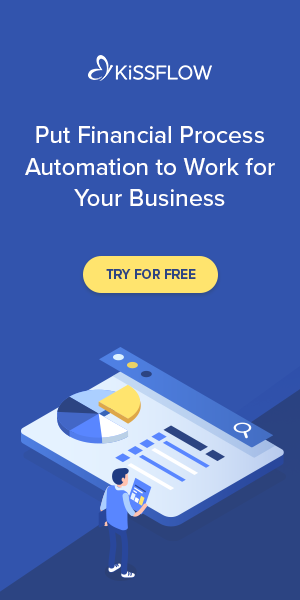Introduction: The Financial Backbone of Modern Life
In an increasingly interconnected and fast-paced economy, loans have emerged as a cornerstone of personal and corporate financial planning. Whether it’s buying a home, launching a business, pursuing higher education, or managing emergencies, loans serve as essential instruments that empower individuals and enterprises to meet their goals. But while the concept of borrowing money is centuries old, today’s loan ecosystem is far more sophisticated, regulated, and versatile. Understanding how loans function, the types available, and the responsibilities involved is not merely financial literacy—it’s financial empowerment.
What is a Loan? A Refined Definition
At its essence, a loan is a financial transaction wherein one party (the lender) provides money to another party (the borrower) under the agreement that the amount will be repaid, usually with interest, over a specified period. The lender could be a bank, credit union, government body, or private institution. In exchange for lending the money, the lender earns interest, which serves as compensation for the risk and opportunity cost of parting with their capital.
The Key Components of a Loan Agreement
Every loan, regardless of its size or purpose, is governed by a set of clearly defined terms. These include:
-
Principal: The original sum of money borrowed.
-
Interest Rate: The percentage charged by the lender on the borrowed amount.
-
Loan Term: The duration over which the loan must be repaid.
-
Repayment Schedule: Monthly, quarterly, or lump-sum payments.
-
Collateral (if applicable): Assets pledged by the borrower to secure the loan.
-
Default Terms: Conditions under which the loan is considered in breach.
Understanding these elements helps borrowers make informed decisions and avoid future financial pitfalls.
Types of Loans: Tailoring Credit to Need
The loan market is vast and varied, designed to accommodate a spectrum of financial objectives. Broadly, loans fall into two categories: secured and unsecured.
Secured Loans
These loans are backed by collateral, which the lender can claim if the borrower defaults.
-
Mortgage Loans: Used to purchase real estate, secured by the property itself.
-
Auto Loans: Designed for vehicle purchases, with the car acting as collateral.
-
Home Equity Loans: Borrowed against the equity in one’s home, often used for renovations or major expenses.
Unsecured Loans
These do not require collateral but often come with higher interest rates due to the increased risk.
-
Personal Loans: Used for a wide range of personal expenses like weddings, travel, or medical bills.
-
Credit Card Loans: Revolving credit with variable interest, suitable for smaller and more frequent expenses.
-
Student Loans: Specifically intended to finance higher education, often with favorable repayment terms and lower interest rates.
Loan Application and Approval: The Process Unveiled
While the specifics vary depending on the lender and type of loan, the general application process typically includes the following stages:
-
Application Submission: Includes personal, financial, and employment details.
-
Credit Evaluation: Lenders assess your credit score, income stability, and debt-to-income ratio.
-
Offer and Terms Disclosure: Upon approval, the lender provides terms, including interest rates and fees.
-
Loan Disbursement: The funds are released to the borrower or the designated third party (e.g., home seller, college).
-
Repayment Begins: As per the agreed schedule, with consistent tracking by the lender.
Interest Rates: Fixed vs. Variable
One of the most critical components of any loan is the interest rate. Rates can be:
-
Fixed: The rate remains the same throughout the loan term, providing payment predictability.
-
Variable: The rate fluctuates based on market benchmarks like the LIBOR or prime rate, introducing potential for both savings and risk.
Borrowers should evaluate not just the rate itself but also the structure, potential caps, and how changes might impact their repayment ability.
The Benefits of Loans: Beyond Immediate Funding
Contrary to popular belief, taking a loan isn’t a sign of financial weakness—it can be a powerful tool for growth, stability, and opportunity when used wisely.
-
Financial Leverage: Loans allow individuals to access high-value assets or investments they couldn’t afford outright.
-
Credit Building: Regular repayments enhance credit scores, unlocking better financial options in the future.
-
Tax Benefits: Certain loans, like mortgages and student loans, come with tax-deductible interest.
-
Liquidity Management: Businesses often use loans to balance cash flow or seize timely growth opportunities.
Risks and Responsibilities: The Other Side of the Coin
With the power of loans comes the responsibility of repayment and the risk of overextension. Failure to manage loans can lead to:
-
Debt Accumulation: Multiple loans with high interest can snowball into unmanageable obligations.
-
Credit Damage: Missed payments or defaults negatively impact credit ratings, restricting future financial flexibility.
-
Asset Loss: In secured loans, defaulting may lead to foreclosure or repossession.
-
Legal Consequences: In extreme cases, defaulting may result in legal action from lenders.
To avoid these pitfalls, borrowers should:
-
Borrow Within Means: Only take on debt that aligns with income and future financial prospects.
-
Understand the Terms: Never sign a loan agreement without fully comprehending its terms and implications.
-
Maintain Emergency Funds: Always have a safety cushion to cover repayments during unforeseen financial hardships.
Innovations in Lending: The Rise of Fintech
Modern lending is undergoing a paradigm shift, fueled by technology and consumer demand for speed, transparency, and accessibility. Key trends include:
-
Peer-to-Peer Lending (P2P): Individuals lend directly to other individuals via online platforms.
-
Digital-Only Lenders: Companies like SoFi, LendingClub, and others offer completely online application and disbursement processes.
-
AI-Powered Underwriting: Algorithms now assess creditworthiness more comprehensively and quickly than traditional models.
-
Microloans and BNPL (Buy Now, Pay Later): Small, flexible credit lines designed for niche and retail purposes.
Conclusion: A Tool of Transformation When Used Wisely
A loan is not merely a financial agreement—it is a bridge between aspiration and achievement. When approached with prudence, clarity, and discipline, borrowing can empower individuals to advance their education, acquire assets, and improve quality of life. Conversely, when entered lightly, it can become a burden that restricts freedom and stunts progress. Ultimately, the key lies not in avoiding loans but in mastering their dynamics and using them as tools for thoughtful financial advancement. The intelligent borrower is not just financially literate but also financially intentional.
















